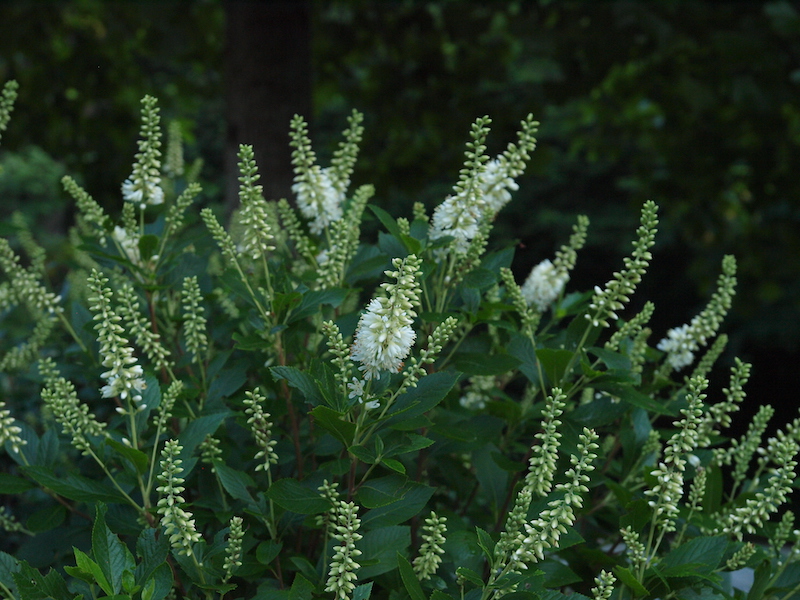Summersweet (Clethra alnifolia) is a shrub grown for the benefit of its abundant, aromatic late-summer blooms. If the summer has come and gone, and Summersweet leaves have yellowed and dropped for the winter, you may be left scratching your head and wondering what went wrong. When Summersweet fails to bloom or has few blooms, it is important to address the reasons why, not only to gain more blooms in the future, but to ensure that the plant’s health is not suffering.

A lack of sufficient light, underwatering, or improper use of fertilizer are common reasons that prevent Summersweet from blooming normally. While Summersweet is often chosen for its ability to bloom in the shade, deep shade may not be suitable for every variety. Summersweet thrives in well-draining soil that stays consistently moist; if the soil is allowed to dry out too much when the buds are forming, Summersweet may put more energy into surviving rather than blooming. Fertilizer that is applied at the wrong time of year or that is high in nitrogen may be forcing Summersweet to grow leaves and roots rather than flowers.
Pruning Summersweet To Help It Bloom
Though Summersweet is not a shrub that needs regular pruning, it will benefit from it in the early spring. Start by removing dead lower branches and cutting back about ⅓ of the old growth to make room for the new. Summersweet blooms on new wood. Thinning out some old growth will allow the plant to put its energy into producing new growth. Later in the spring and summer, avoid pruning anything other than dead or damaged branches. When Summersweet is shaped or pruned too late in the season, flower buds may be removed, impacting how much it can bloom.

Fertilizing Summersweet To Help It Bloom
When Summersweet fails to bloom, it is rarely a result of nutrient deficiencies. Summersweet is a light feeder, not needing much more fertilization than a sprinkle of slow-release tree and shrub fertilizer in the spring. When fed fertilizer later in the year, especially formulas high in nitrogen, Summersweet may grow more leaves and roots at the expense of flowers. If you suspect that your plants are experiencing nutrient deficiencies, you can use a soil testing kit or send soil to your local extension service to have it analyzed, and then amend your soil accordingly. Over-fertilization often creates more issues than under-fertilization.
Get Summersweet To Produce More Blooms
Summersweet needs consistently moist, well-draining soil. When the soil is allowed to dry out too much, plant health tends to suffer. Improper watering is the leading cause of failed blooms in Summersweet. Instead of putting energy into blooming, Summersweet may be doing everything it can to preserve water and survive.
In hot, dry climates, Summersweet may do best in a spot with some protection from the afternoon sun. If the soil around the plant is dry and cracking, it is drying out too much. Water Summersweet regularly, especially in its first year while it is becoming established. One way to increase moisture retention in the soil is by adding 2-3 inches of mulch around the base of the plant.
While Summersweet can bloom in the shade, some varieties need more light than others to bloom. Dappled shade allows for light to reach the plant, so take a look at the canopy above Summersweet and thin out overhanging branches. As a last resort, Summersweet can be transplanted in the early spring while it is still dormant into a spot with more direct sunlight. With adequate light, consistent moisture, early spring pruning, and fertilizing, Summersweet should continue to give you a late-summer show.
Why Summersweet Isn’t Blooming
- Lack of sunlight
- Lack of moisture
- Too much fertilizer
- Improper pruning
 |
Author Lynn Gusman - Published 1-13-2023 |
